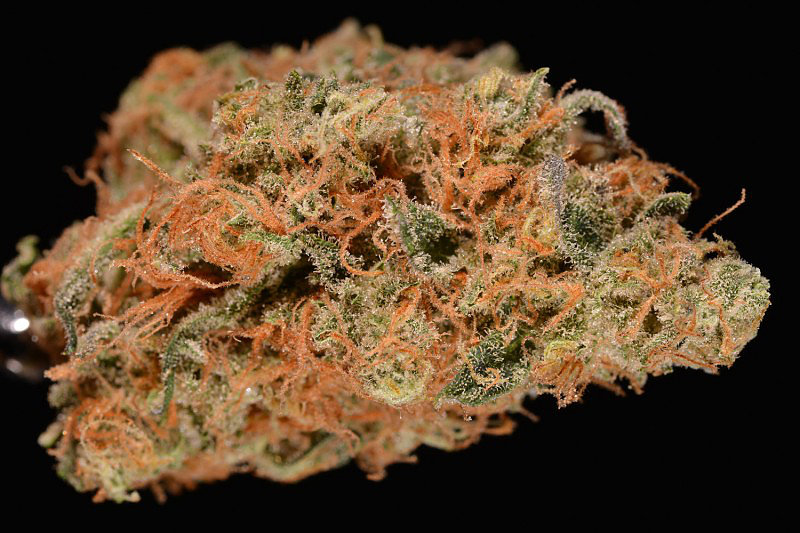Effects of Agent OrangeAgent Orange
Synthetic Cannabinoids in Agent O Weed Strain
Agent Orange was a herbicide and defoliant used by the United States military during the Vietnam War. It contained the chemical dioxin, which has been linked to various health problems in people who were exposed to it. The most common effects of Agent Orange include birth defects and cancer.
The main component of Agent Orange is a synthetic form of estrogen called diethylstilbestrol (DES), which has been shown to cause reproductive problems in both males and females, as well as an increased risk of breast cancer in women.

Studies have also linked exposure to Agent Orange with several other health issues, including:
- Cancer: Exposure to dioxin, a contaminant of Agent Orange, has been shown to increase the risk of various types of cancer, including non-Hodgkin lymphoma and soft tissue sarcoma.
- Birth defects: Women exposed to Agent Orange during pregnancy have an increased risk of having children with birth defects such as heart problems and neurological disorders.
- Reproductive issues: Men exposed to Agent Orange have reported decreased fertility, impotence, and other reproductive problems.
The effects of Agent Orange on the human body can be both acute and long-term. Acute exposure to Agent Orange can cause symptoms such as skin irritation, nausea, and respiratory problems. Long-term exposure has been linked to chronic health conditions, including cancer and birth defects.
Regarding the Synthetic Cannabinoids in Agent O Weed Strain, these compounds are synthetic versions of cannabinoids found naturally in marijuana. While they may have some therapeutic benefits, they can also pose significant risks to users, particularly when smoked or vaporized as part of a cannabis product like Agent O Weed Strain.
- Risk of overdose: Synthetic cannabinoids can cause unpredictable and potentially life-threatening reactions in high doses.
- Mental health effects: Using synthetic cannabinoids has been linked to an increased risk of mental health disorders, including anxiety, paranoia, and psychosis.
- Addiction potential: Some research suggests that synthetic cannabinoids can be addictive and may lead to dependence in some users.
It’s essential for consumers to be aware of the potential risks associated with Agent Orange and Synthetic Cannabinoids in cannabis products like Agent O Weed Strain. More research is needed to understand the effects of these compounds on human health, but it’s clear that caution should be exercised when consuming any product containing them.
Ultimately, individuals who are considering using a cannabis product like Agent O Weed Strain with synthetic cannabinoids or those exposed to Agent Orange should consult their healthcare provider for personalized advice and guidance. They can help determine the best course of action based on individual circumstances and provide support throughout the process.
It’s worth noting that some studies suggest that the effects of Synthetic Cannabinoids in cannabis products like Agent O Weed Strain may be different from those associated with natural cannabinoids found in marijuana. More research is needed to fully understand these differences and how they impact human health.
Agent Orange is a strain containing synthetic cannabinoids, particularly AM2201, which is not approved for human consumption by the DEA due to potential health risks. Research by the University of Arizona’s School of Pharmacy indicates that these compounds can be highly potent and may pose serious threats to users.
The use of Agent Orange, a strain containing synthetic cannabinoids, has raised concerns due to its potential health risks.
One of the primary compounds found in this strain is AM2201, which is not approved for human consumption by the DEA.
This ban is due to the high potency and potential threats that these compounds can pose to users.
The University of Arizona’s School of Pharmacy has conducted research on synthetic cannabinoids, indicating their potency and health risks.
Some of the effects of Agent Orange include:
- Cognitive impairment
- Mood disturbances
- Memory loss
- Anxiety and panic attacks
- Increased heart rate
- Nausea and vomiting
The use of synthetic cannabinoids like AM2201 can also lead to the development of tolerance, dependence, and addiction.
It is essential for users to be aware of these potential risks and consequences before using Agent Orange or any other synthetic cannabinoid product.
In addition to individual health risks, the use of synthetic cannabinoids has been linked to an increased risk of accidents, injuries, and fatalities, particularly when used in combination with other substances.
History of Agent Orange
Military Background and Chemical Composition
The history of Agent Orange dates back to World War II, when the United States began developing herbicides for military use. The chemical compound was initially called “Agent L,” but it wasn’t until 1961 that it became known as Agent Orange due to the color of the drums used to store it.
The first large-scale deployment of Agent Orange occurred during the Vietnam War, where the US military sprayed over 11 million gallons between 1961 and 197 The herbicide was used to defoliate trees and destroy crops in densely forested areas, making it easier for American forces to navigate and conduct combat operations.
The military background of Agent Orange is closely tied to its development as a chemical warfare agent. In the early 20th century, researchers began experimenting with various herbicides, including 2,4-D, which was later combined with 2,4,5-T (2,4,5-trichlorophenoxyacetic acid) to create Agent Orange.
The chemical composition of Agent Orange is a mixture of 2,4-D and 2,4,5-T. The former is a chlorophenoxy herbicide that disrupts plant growth, while the latter contains TCDD (2,3,7,8-tetrachlorodibenzo-p-dioxin), a toxic dioxin byproduct that has been linked to various health problems.
The combination of 2,4-D and TCDD made Agent Orange highly effective as an herbicide but also extremely hazardous to human health. Exposure to the chemical has been associated with numerous health issues, including cancer, birth defects, and neurological damage.
In 1970, the US military halted the use of Agent Orange due to growing concerns about its safety. However, many veterans continued to experience health problems after their exposure to the herbicide, leading to a long-standing controversy over its use during the Vietnam War.
The term “Agent Orange” originates from the US military’s use during the Vietnam War. This particular chemical agent was composed of a mixture of 2,4D and 2,4,5T herbicides contaminated with dioxin, a toxic byproduct.
The history of Agent Orange dates back to the Vietnam War, where it was used by the US military as a herbicide and defoliant to destroy crops and foliage that provided cover for enemy forces.
The term “Agent Orange” refers specifically to a particular formulation of this chemical agent, which was composed of a mixture of 2,4D and 2,4,5T herbicides contaminated with dioxin, a toxic byproduct known as TCDD (2,3,7,8-tetrachlorodibenzo-p-dioxin).
The US military sprayed Agent Orange over millions of acres of land in Vietnam between 1961 and 1971, affecting not only the environment but also the local population and US troops stationed in the region.
Agent Orange was designed to destroy crops, including rice and other food sources, as well as foliage that provided cover for enemy forces. However, it had a devastating impact on the environment and human health due to the toxic nature of dioxin.
The effects of Agent Orange exposure were widespread and long-lasting. Many Vietnam veterans who were exposed to the chemical agent suffered from various health problems, including cancer, birth defects, and neurological disorders.
Additionally, the use of Agent Orange in Vietnam led to significant environmental damage, with many areas still contaminated with dioxin today. The Vietnamese government has struggled to clean up these areas and provide compensation to those affected by the use of Agent Orange during the war.
The legacy of Agent Orange continues to be felt today, with ongoing health problems affecting veterans and civilians who were exposed to the chemical agent. It also serves as a cautionary tale about the dangers of using toxic chemicals in warfare and the importance of protecting human health and the environment.
Controversy Surrounding Agent O Weed Strain
Government Regulations and Health Concerns
The controversy surrounding Agent O weed strain, also known as Agent Orange, has garnered significant attention in recent years due to its potential health concerns and government regulations.
Agent Orange was initially developed by the United States Department of Defense during the Vietnam War for use as a herbicide. However, it was later discovered that the chemical compound contained in this agent, 2,4-D, posed significant health risks to humans and animals exposed to it.
The concerns surrounding Agent O weed strain stem from its potential to contaminate crops, water sources, and soil. The use of this herbicide has been linked to various health issues, including cancer, neurological damage, and reproductive problems.
Some of the key health concerns associated with Agent Orange include:
- Cancer: Exposure to 2,4-D, a key component of Agent O weed strain, has been linked to an increased risk of cancer, particularly liver and kidney cancer.
- Neurological damage: Prolonged exposure to this herbicide has been known to cause neurological problems, including headaches, dizziness, and memory loss.
- Reproductive issues: Studies have shown that exposure to Agent O weed strain can lead to reproductive problems in both men and women, including infertility and birth defects.
The government has implemented various regulations to mitigate the risks associated with Agent Orange, but many argue that these measures are inadequate. Some of the key government regulations include:
- Restrictions on use: The United States Environmental Protection Agency (EPA) has restricted the use of Agent O weed strain, requiring it to be used only in specific circumstances and with proper safety protocols.
- Labeling requirements: Manufacturers are required to label products containing 2,4-D, including Agent Orange, with clear warnings about potential health risks.
- Cleanup efforts: The EPA has implemented programs to clean up contaminated sites and restore affected areas.
In summary, the controversy surrounding Agent O weed strain is multifaceted and complex. While government regulations have been put in place to mitigate risks, many argue that these measures are inadequate. It is essential for consumers, farmers, and policymakers to remain vigilant and continue advocating for safe and effective methods of weed control.
Due to the health risks associated with its active compounds, several government bodies have issued warnings regarding the use of synthetic cannabinoids. The FDA has also taken action against products containing these substances, emphasizing their potential dangers to human health.
The controversy surrounding Agent O weed strain, also known as Agent Orange, revolves around its potential health risks and the warnings issued by government bodies.
The main active compounds in Agent O weed strain are synthetic cannabinoids, which have been linked to various adverse effects on human health.
Health Risks Associated with Synthetic Cannabinoids
- Panic attacks and anxiety: Users may experience heightened levels of anxiety and panic attacks due to the psychoactive properties of synthetic cannabinoids.
- Cognitive impairment: Synthetic cannabinoids can cause memory problems, disorientation, and difficulty concentrating.
- Psychotic episodes: In some cases, users have reported experiencing hallucinations and psychotic episodes after consuming products containing these substances.
The FDA has issued warnings and taken action against products containing synthetic cannabinoids, highlighting their potential dangers to human health.
Government Warnings and Actions
- The US government has issued a warning about the risks associated with synthetic cannabinoids, advising users to avoid consuming these substances altogether.
- The DEA has scheduled certain synthetic cannabinoids as Schedule I controlled substances, restricting their availability and use.
- Healthcare professionals have been alerted to the potential health risks of synthetic cannabinoids and are advised to treat affected patients accordingly.
Due to these concerns, it is essential for individuals to exercise caution when consuming any product containing synthetic cannabinoids and to prioritize their health and well-being by avoiding these substances altogether.
Conclusion
The controversy surrounding Agent O weed strain highlights the importance of being aware of the potential risks associated with synthetic cannabinoids and the need for government bodies and healthcare professionals to take action in response.
- Fatso Weed Strain Information - September 16, 2024
- Guava Runtz Weed Strain Information - September 16, 2024
- Han Solo Burger Weed Strain Information - September 16, 2024








